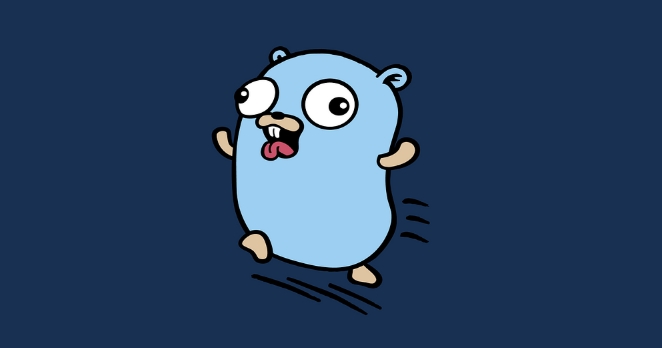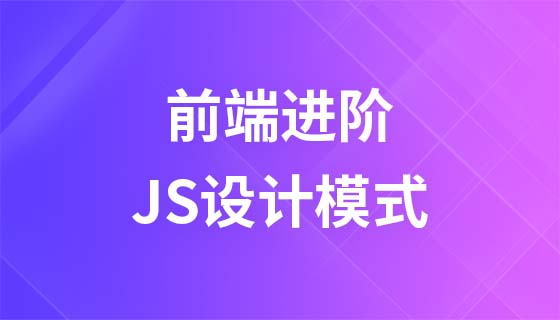Golang流水线优化:channel缓冲与关闭技巧
时间:2025-07-03 10:03:27 443浏览 收藏
欢迎各位小伙伴来到golang学习网,相聚于此都是缘哈哈哈!今天我给大家带来《Golang高效流水线构建:channel缓冲与关闭技巧》,这篇文章主要讲到等等知识,如果你对Golang相关的知识非常感兴趣或者正在自学,都可以关注我,我会持续更新相关文章!当然,有什么建议也欢迎在评论留言提出!一起学习!
要设计一个可扩展的Golang流水线,关键在于合理利用channel缓冲与关闭策略,并确保各阶段职责单一、解耦。1. 使用缓冲channel平滑数据流,避免生产者阻塞;2. 适时关闭channel以通知消费者结束,防止死锁;3. 每个流水线阶段应只处理单一任务,通过channel连接,便于扩展维护;4. 设置合理的channel缓冲大小以优化吞吐量,避免内存浪费或性能瓶颈;5. 使用context.Context和sync.WaitGroup实现优雅关闭goroutine;6. 采用错误channel或Result结构体传递错误信息,统一处理异常情况。以上机制共同保障了流水线的高效性、稳定性和可维护性。

Golang构建高效流水线模式,关键在于合理利用channel的缓冲与关闭策略。缓冲channel可以平滑数据流,避免生产者阻塞;适时关闭channel则能优雅地通知消费者数据结束,防止死锁。

channel是Golang并发编程的核心。理解缓冲和关闭机制,能大幅提升代码的效率和可维护性。

如何设计一个可扩展的Golang流水线?
流水线设计要考虑阶段间的耦合度。尽量让每个阶段只处理单一职责,通过channel连接,这样更容易扩展和维护。例如,一个图片处理流水线可以分为:读取图片 -> 缩放图片 -> 添加水印 -> 保存图片。每个阶段都是一个独立的goroutine,通过channel传递图片数据。
package main
import (
"fmt"
"image"
"image/jpeg"
"image/png"
"io"
"log"
"os"
"path/filepath"
"strconv"
"sync"
"time"
"github.com/nfnt/resize"
)
// ImageTask represents a single image processing task.
type ImageTask struct {
InputPath string
OutputPath string
Width uint
Height uint
}
// resizeImage resizes the image and returns the resized image.
func resizeImage(img image.Image, width, height uint) image.Image {
return resize.Resize(width, height, img, resize.Lanczos3)
}
// decodeImage decodes the image from the given reader.
func decodeImage(reader io.Reader, inputPath string) (image.Image, string, error) {
ext := filepath.Ext(inputPath)
switch ext {
case ".jpg", ".jpeg":
img, err := jpeg.Decode(reader)
if err != nil {
return nil, "", fmt.Errorf("decoding JPEG: %w", err)
}
return img, ".jpg", nil
case ".png":
img, err := png.Decode(reader)
if err != nil {
return nil, "", fmt.Errorf("decoding PNG: %w", err)
}
return img, ".png", nil
default:
return nil, "", fmt.Errorf("unsupported image format: %s", ext)
}
}
// worker reads image tasks from the tasks channel, processes them, and sends the results to the results channel.
func worker(id int, tasks <-chan ImageTask, results chan<- string, wg *sync.WaitGroup) {
defer wg.Done()
for task := range tasks {
startTime := time.Now()
// Open the input file.
inputFile, err := os.Open(task.InputPath)
if err != nil {
log.Printf("Worker %d: Error opening input file %s: %v", id, task.InputPath, err)
results <- fmt.Sprintf("Error processing %s: %v", task.InputPath, err)
continue
}
defer inputFile.Close()
// Decode the image.
img, ext, err := decodeImage(inputFile, task.InputPath)
if err != nil {
log.Printf("Worker %d: Error decoding image %s: %v", id, task.InputPath, err)
results <- fmt.Sprintf("Error processing %s: %v", task.InputPath, err)
continue
}
// Resize the image.
resizedImage := resizeImage(img, task.Width, task.Height)
// Create the output file.
outputFile, err := os.Create(task.OutputPath)
if err != nil {
log.Printf("Worker %d: Error creating output file %s: %v", id, task.OutputPath, err)
results <- fmt.Sprintf("Error processing %s: %v", task.InputPath, err)
continue
}
defer outputFile.Close()
// Encode and save the resized image.
switch ext {
case ".jpg", ".jpeg":
err = jpeg.Encode(outputFile, resizedImage, nil)
case ".png":
err = png.Encode(outputFile, resizedImage)
}
if err != nil {
log.Printf("Worker %d: Error encoding image %s: %v", id, task.OutputPath, err)
results <- fmt.Sprintf("Error processing %s: %v", task.InputPath, err)
continue
}
duration := time.Since(startTime)
results <- fmt.Sprintf("Worker %d: Successfully processed %s in %v", id, task.InputPath, duration)
}
}
func main() {
// Configuration
numWorkers := 4
inputDir := "input_images"
outputDir := "output_images"
targetWidth := uint(800)
targetHeight := uint(600)
// Create input and output directories if they don't exist.
if _, err := os.Stat(inputDir); os.IsNotExist(err) {
log.Fatalf("Input directory '%s' does not exist. Please create it and add images.", inputDir)
}
if _, err := os.Stat(outputDir); os.IsNotExist(err) {
err := os.MkdirAll(outputDir, 0755)
if err != nil {
log.Fatalf("Failed to create output directory: %v", err)
}
}
// Create channels for tasks and results.
tasks := make(chan ImageTask, 100) // Buffered channel
results := make(chan string, 100) // Buffered channel
// Start the workers.
var wg sync.WaitGroup
for i := 1; i <= numWorkers; i++ {
wg.Add(1)
go worker(i, tasks, results, &wg)
}
// Read image files from the input directory and create tasks.
filepath.Walk(inputDir, func(path string, info os.FileInfo, err error) error {
if err != nil {
return err
}
if info.IsDir() {
return nil
}
outputPath := filepath.Join(outputDir, "resized_"+info.Name())
tasks <- ImageTask{
InputPath: path,
OutputPath: outputPath,
Width: targetWidth,
Height: targetHeight,
}
return nil
})
// Close the tasks channel after all tasks have been sent.
close(tasks)
// Wait for all workers to complete.
go func() {
wg.Wait()
close(results) // Close the results channel after all workers are done.
}()
// Collect and print the results.
for result := range results {
fmt.Println(result)
}
fmt.Println("Image processing completed.")
}这个例子展示了一个简单的图片缩放流水线。核心在于 tasks channel 和 results channel 的使用。tasks channel 负责将图片处理任务传递给 worker goroutine,results channel 负责收集处理结果。

Channel缓冲大小如何影响流水线性能?
缓冲大小直接影响流水线的吞吐量。过小的缓冲可能导致生产者阻塞,降低效率;过大的缓冲则会占用过多内存。理想的缓冲大小需要根据实际情况进行调整。可以考虑使用benchmark测试不同缓冲大小下的性能,找到最佳值。一般来说,缓冲大小设置为worker数量的几倍是一个不错的起点。
另外,监控channel的长度也是一个好习惯,可以帮助你了解流水线的运行状态,及时发现瓶颈。
为什么需要关闭channel?何时关闭?
关闭channel是通知接收者数据已经发送完毕的信号。如果不关闭channel,接收者可能会一直阻塞等待新的数据,导致死锁。
应该由生产者关闭channel,而不是消费者。这是因为生产者更清楚何时不再有新的数据产生。消费者关闭channel可能会导致生产者尝试向已关闭的channel发送数据,引发panic。
// 生产者
func producer(ch chan int) {
defer close(ch) // 确保在函数退出时关闭channel
for i := 0; i < 10; i++ {
ch <- i
}
}
// 消费者
func consumer(ch chan int) {
for val := range ch { // 使用range循环遍历channel,channel关闭时循环自动结束
fmt.Println(val)
}
}
func main() {
ch := make(chan int, 5)
go producer(ch)
consumer(ch)
}range 循环是处理channel数据的常用方式。当channel关闭时,range 循环会自动结束,无需手动判断channel是否关闭。
如何处理流水线中的错误?
错误处理是流水线设计中不可或缺的一部分。每个阶段都应该能够处理可能发生的错误,并将错误信息传递给下游阶段或者集中处理。
一种常见的做法是使用专门的错误channel来传递错误信息。
type Result struct {
Data int
Err error
}
func worker(input <-chan int, output chan<- Result) {
for num := range input {
// 模拟可能发生的错误
if num%2 == 0 {
output <- Result{Data: num * 2, Err: nil}
} else {
output <- Result{Data: 0, Err: fmt.Errorf("invalid number: %d", num)}
}
}
}
func main() {
input := make(chan int, 10)
output := make(chan Result, 10)
go worker(input, output)
for i := 0; i < 10; i++ {
input <- i
}
close(input)
for i := 0; i < 10; i++ {
result := <-output
if result.Err != nil {
fmt.Println("Error:", result.Err)
} else {
fmt.Println("Result:", result.Data)
}
}
close(output)
}这个例子中,Result 结构体包含了数据和错误信息。worker goroutine 将处理结果和错误信息都发送到 output channel。主 goroutine 负责从 output channel 接收结果,并处理错误。
如何优雅地关闭多个goroutine组成的流水线?
优雅关闭流水线的关键在于正确使用 sync.WaitGroup 和 context.Context。sync.WaitGroup 用于等待所有goroutine完成,context.Context 用于通知goroutine退出。
import (
"context"
"fmt"
"sync"
"time"
)
func worker(ctx context.Context, id int, jobs <-chan int, results chan<- int, wg *sync.WaitGroup) {
defer wg.Done()
for {
select {
case job, ok := <-jobs:
if !ok {
fmt.Printf("Worker %d: jobs channel closed\n", id)
return
}
fmt.Printf("Worker %d: processing job %d\n", id, job)
time.Sleep(time.Second) // Simulate work
results <- job * 2
case <-ctx.Done():
fmt.Printf("Worker %d: received shutdown signal\n", id)
return
}
}
}
func main() {
numWorkers := 3
numJobs := 5
jobs := make(chan int, numJobs)
results := make(chan int, numJobs)
ctx, cancel := context.WithCancel(context.Background())
defer cancel() // Ensure cancellation signal is sent when main exits
var wg sync.WaitGroup
for i := 1; i <= numWorkers; i++ {
wg.Add(1)
go worker(ctx, i, jobs, results, &wg)
}
// Send jobs
for i := 1; i <= numJobs; i++ {
jobs <- i
}
close(jobs) // Signal no more jobs
// Collect results (or handle them concurrently)
go func() {
wg.Wait() // Wait for all workers to finish
close(results) // Close the results channel after all workers are done.
}()
// Simulate a shutdown signal after some time
time.Sleep(3 * time.Second)
fmt.Println("Sending shutdown signal...")
cancel() // Signal all workers to stop
// Print results
for result := range results {
fmt.Println("Result:", result)
}
fmt.Println("Program finished")
}在这个例子中,context.Context 用于通知 worker goroutine 退出。当 cancel() 函数被调用时,所有监听 ctx.Done() channel 的 goroutine 都会收到信号,并退出循环。sync.WaitGroup 用于等待所有 worker goroutine 退出后,关闭 results channel。
总结来说,Golang构建高效流水线模式需要深入理解channel的缓冲与关闭策略,并结合实际场景进行优化。错误处理、优雅关闭也是保证流水线稳定运行的关键因素。
文中关于golang,channel,流水线,缓冲channel,关闭channel的知识介绍,希望对你的学习有所帮助!若是受益匪浅,那就动动鼠标收藏这篇《Golang流水线优化:channel缓冲与关闭技巧》文章吧,也可关注golang学习网公众号了解相关技术文章。
-
505 收藏
-
503 收藏
-
502 收藏
-
502 收藏
-
502 收藏
-
163 收藏
-
402 收藏
-
119 收藏
-
417 收藏
-
241 收藏
-
164 收藏
-
471 收藏
-
489 收藏
-
296 收藏
-
171 收藏
-
238 收藏
-
156 收藏
-

- 前端进阶之JavaScript设计模式
- 设计模式是开发人员在软件开发过程中面临一般问题时的解决方案,代表了最佳的实践。本课程的主打内容包括JS常见设计模式以及具体应用场景,打造一站式知识长龙服务,适合有JS基础的同学学习。
- 立即学习 543次学习
-

- GO语言核心编程课程
- 本课程采用真实案例,全面具体可落地,从理论到实践,一步一步将GO核心编程技术、编程思想、底层实现融会贯通,使学习者贴近时代脉搏,做IT互联网时代的弄潮儿。
- 立即学习 516次学习
-

- 简单聊聊mysql8与网络通信
- 如有问题加微信:Le-studyg;在课程中,我们将首先介绍MySQL8的新特性,包括性能优化、安全增强、新数据类型等,帮助学生快速熟悉MySQL8的最新功能。接着,我们将深入解析MySQL的网络通信机制,包括协议、连接管理、数据传输等,让
- 立即学习 500次学习
-

- JavaScript正则表达式基础与实战
- 在任何一门编程语言中,正则表达式,都是一项重要的知识,它提供了高效的字符串匹配与捕获机制,可以极大的简化程序设计。
- 立即学习 487次学习
-

- 从零制作响应式网站—Grid布局
- 本系列教程将展示从零制作一个假想的网络科技公司官网,分为导航,轮播,关于我们,成功案例,服务流程,团队介绍,数据部分,公司动态,底部信息等内容区块。网站整体采用CSSGrid布局,支持响应式,有流畅过渡和展现动画。
- 立即学习 485次学习
